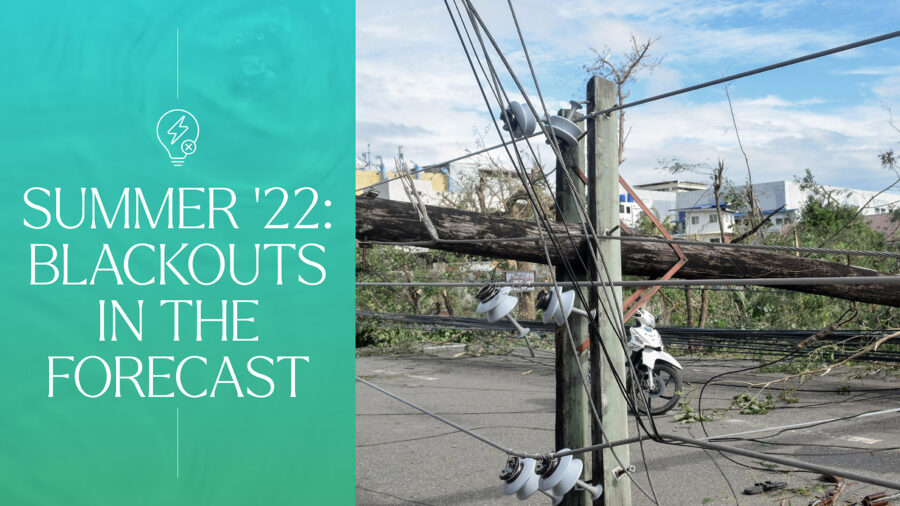The food industry should be on high alert this summer amid warnings from the North American Electric Corp. that high temperatures, drought and the prospects of extreme weather could contribute to blackouts across the continent.
In its 2022 Summer Reliability Assessment, NERC cited the West – from Texas to Saskatchewan – as the area with the most “elevated risk” largely because drought and inadequate snow pack have cut hydroelectric generation. In the Missouri River basin, output from thermal generators is likely to suffer because of low water levels in the Missouri River.
This amid a forecast from NOAA’s Climate Prediction Center calling for above average temperatures for most of the contiguous United States.
“Persistent, extreme drought and its accompanying weather patterns … tend to create extra stresses on electricity supply and demand,” said Mark Olson, NERC’s manager of reliability assessments. “Grid operators in affected areas will need all available tools to keep the system in balance this summer.”
POTENTIAL IMPACT ON ESTABLISHMENTS
When the grid comes under undue stress, operators institute rolling blackouts to keep the system from going down entirely. Everyone from farmers to restaurant operators and grocers could feel the impact.
Any foods that need refrigeration or freezing are most vulnerable to power outages, as are water supplies that could be contaminated by sewage from floodwaters.
“In order to prevent any further price increases and to truly get ahead of blackouts and natural disasters, food establishments, retailers and facilities must have a food safety emergency plan in place and be able to quickly implement their strategy to prevent further loss and add to the costs of such events,” George Gasner, senior managing director of consulting, training and technical services in the global food division of NSF, the National Sanitation Foundation, told The Food Institute.
POSSIBLE IMPACT ON AGRICULTURE
Even before foods get into the supply chain, farmers are likely to feel an impact. Paige Graham, vice president of social impact and sustainability at the communications firm Edelman, noted farmers will feel the impact on irrigation systems and their ability to bring water to livestock.
A blackout also would mean no access to milking machines for their cattle, unless there is adequate access to generators and refrigeration facilities, which could lead to emptier grocery store shelves.
John Moura, NERC’s director of reliability assessment and performance analysis, told reporters the assessment was “pretty sobering” and warned risks were spreading, blaming the threat in part on climate change. He said the pace with which the government is trying to transform the grid is out of sync with the existing power network as supply chain and other issues thwart efforts to increase wind and solar power generation.
The assessment indicated the Midwest has lost 2.3% of its generating capacity since last summer due to plant closures and tornado damage to a key transmission line that isn’t expected to be fixed before next month. In Canada, SaskPower is projecting a 7.5% increase in peak demand from 2021 levels, and California officials already are warning of blackouts for the next three summers.
“Most manufacturers are also already (and if not, should be) in contact with local and state governments to understand when a blackout might occur and for what planned length of time. With this information, their emergency food safety plan can be able to be adapted,” Gansner said.












